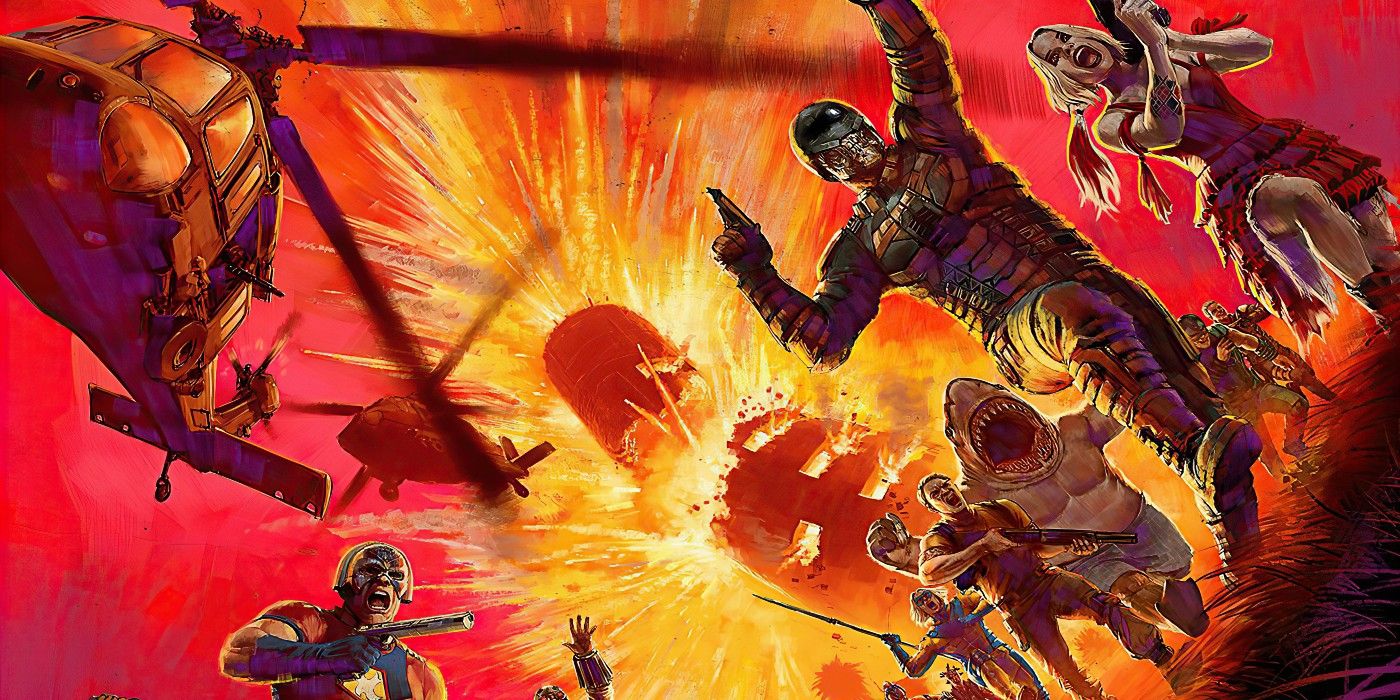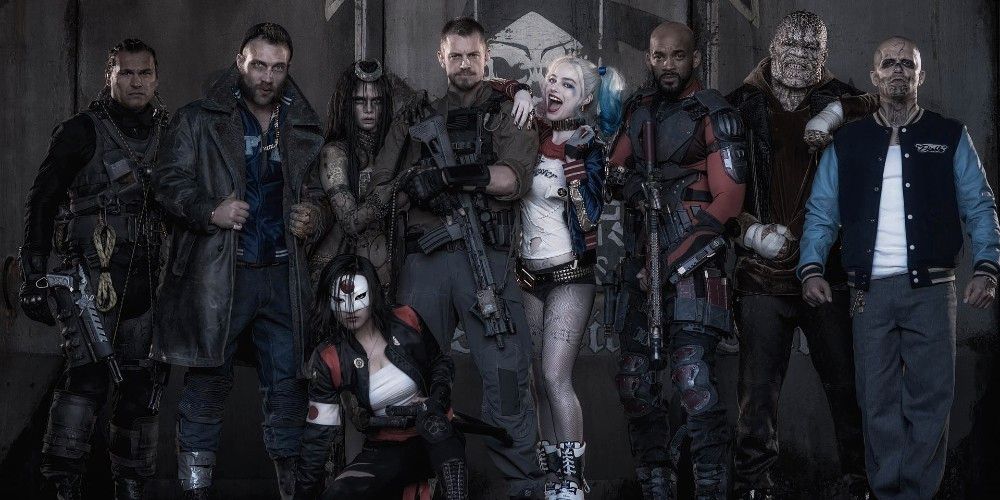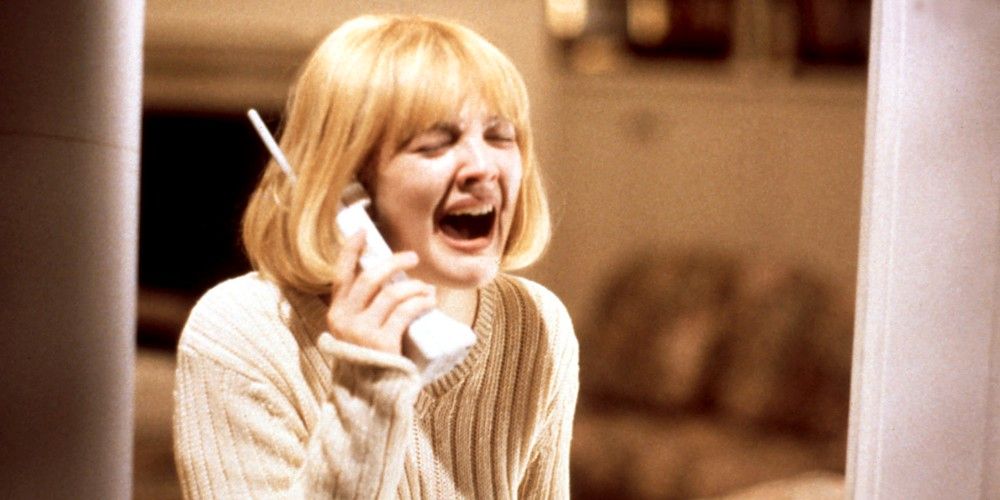
This article contains major spoilers for The Suicide Squad, Psycho and Scream.
The Suicide Squad hinges on supervillains and rogues from DC Comics exchanging their services on dangerous black-ops missions for reductions in their prison sentences. The morbid appeal of this premise is how expendable these men (and women) on a mission are. Such operatives are not concerned with being a likable inspiration, and their overseer Amanda Waller will not hesitate to detonate bombs implanted in their necks if they stray from the mission. It means the Squad – typically cultivated from B or C-grade villains – lack traditional “plot armour” and could die any second, either within their suicide missions or attempting to flee from them. They are utterly disposable tools.
One could argue that such expendable characters are hard to become emotionally attached to. But actually, the exact opposite is true. Viewers were enthralled by Game of Thrones because none of the sprawling cast truly felt ‘safe,’ and this anxiety over their survival only enhanced engagement with them. Things are more precious when they are finite. However, one of the many complaints against Task Force X’s first cinematic debut in Suicide Squad (2016) was that it failed to capture this potential. Although the implanted explosions are involved in that film, they are largely a non-factor. The sole exception to this only highlights the rest of the film’s weakness.
RELATED: Amazon's Lord of the Rings Series Release Date And First Image Revealed
See, most of Suicide Squad’s opening is composed of splashy character introductions, cramming in the backstory and powers of the Squad members, complete with a character infographic. This happens 7 times for each member of the Squad. Except for Slipknot (Adam Beach) that is. Instead, this character suddenly appears from a truck as Rick Flag (Joel Kinnaman) calls him “the man who can climb anything,” and is barely given any lines.

It is painfully clear that Slipknot is not part of the core cast. When Captain Boomerang (Jai Courtney) persuades Slipknot to “test” the explosives. Slipknot was marked for death from his introduction, and there is absolutely no surprise when he dies. If anything, Slipknot demonstrating the validity of the implanted explosives ensures that audiences are narratively comfortable the other Squad members will not be killed.
James Gunn’s sequel/reboot, The Suicide Squad, does things a bit differently. We are immediately thrown into Savant (Michael Rooker) being taken from his cell for a Suicide Squad mission, following him as Amanda Waller (Viola Davis) briskly reiterates the film’s premise and he gets implanted and meets his teammates. This includes familiar faces like Rick Flag, Captain Boomerang and Harley Quinn (Margot Robbie). And although the new characters are fairly obscure, they are played by relatively known actors like Pete Davidson (as Blackguard), Sean Gunn (as Weasel) and Nathan Fillion (as TDK). None of the group – save for Savant – have been given narrative priority, and their antagonist banter during the mission transit makes them all equally distinct.
But The Suicide Squad goes beyond even this. As they arrive at the shores of Corto Maltese, events quickly spiral into catastrophe. HQ neglected to check if Weasel could swim, so he dies on arrival. Then Blackguard gives away their position, having betrayed Task Force X to the authoritarian government, before promptly having his face blown off.
The rest of the Squad are brutally shot or set on fire, including Captain Boomerang – James Gunn literally burning down the previous iteration of the team. The stoic Savant fans were introduced to The Suicide Squad cracks when staring down this massacre, pathetically trying to paddle away before Waller detonates his explosive. Instead of a solitary member of the Squad being ‘disposable,’ almost the entire team is annihilated, before Waller switches to a “B-team.”

This outrageous opening perfectly hammers home how expendable the Suicide Squad truly are. Just before the HQ staff placed bets on who would survive, and the opening credits – magnificently scored by The Jim Carroll Band’s “People Who Died” – shows them celebrating or exchanging the cash, these convicts lives simply a game to them.
But The Suicide Squad revels in this black comedy, the shocking evisceration of the Squad played for laughs. The opening scene encapsulates the gnarly, cartoonishly excessive violence used throughout The Suicide Squad, where Bloodsport (Idris Elba) and Peacemaker (John Cena) use murdering soldiers – soldiers who, it turns out, were on their side – as a game of one-upmanship. Savant and his group thought they were the protagonists of the film, but the joke is on them (and the audience) for overestimating their importance.
This technique is called having a ‘false protagonist,’ where the audience is led to believe someone is the lead character, before the rug is dramatically pulled from underneath them. A famous example is Alfred Hitchcock’s classic Psycho (1960), which initially follows Marion Crane (Janet Leigh) stealing money from her employer, before hiding away at the Bates Motel.

Contemporary audiences might have thought the plot revolved around Marion, before Psycho’s iconic shower scene has her stabbed to death, and her sister Lila (Vera Miles). Hitchcock was so protective of this “twist” that most of the film’s marketing was him walking around an empty set, and he demanded a “no late admissions” policy from cinemas, lest somebody missed Marion being framed as the false protagonist.
Wes Craven made a similar move in Scream (1996), by beginning the film with actress Drew Barrymore, who, at the time, was the biggest name in Scream’s cast. Given she was prominently featured in the film’s marketing, most movie-goers though it was a safe bet she would face the final villain, if not outright survive. Instead, her character Casey is killed off in the first 15 minutes, taking audiences out of their comfort zone by subverting the rules of the genre.

Yet The Suicide Squad’s opening functions as more than an audience misdirect. It directly creates a parallel with the heroic decision before the final fight. Starro the Destroyer has been unleashed upon the island, but Amanda Waller orders the Squad to retreat anyway. All she wanted was to eradicate evidence of US involvement, and since Corto Maltese is a “hostile nation,” a monster like Starro might even be beneficial. But the massacre of innocent civilians is a line this Squad cannot cross. In the opening, Savant was detonated for walking away from danger in a premature retreat. Now, Waller reprimands the Squad for walking into danger while she’s ordered them to retreat.
This team’s moral conviction is also more convincing than in 2016’s Suicide Squad. Instead of facing danger while the bombs were still active, the previous film had Rick Flag deactivate them when hope seemed lost. But this led to an awkward scene of Captain Boomerang immediately fleeing the area and most of the Squad only having vague motivation, yet all of them (including Boomerang, without explanation) heading back to defeat the Enchantress (Cara Delevingne). By having The Suicide Squad actively disobey orders, it shows them rising above their assignment as unthinking government tools.
This moment in The Suicide Squad also corrects another odd scene from 2016’s version, where Amanda Waller executes her HQ personnel for reasons that are never revealed. It’s meant to show how ice-cold Waller is, but it is mostly confusing and it squeamishly seems like Suicide Squad respects how ruthless she is. Now in The Suicide Squad, as Waller is about to execute the team, her own HQ staff betray Waller to help the Squad defeat Starro. Instead of being uncritical background extras, the support team grow from carelessly betting on lives to actively trying to save them. All this plays into The Suicide Squad’s grander arc; where if everybody is ‘disposable’ and liable to die, it also means that anybody can be a hero, too.

